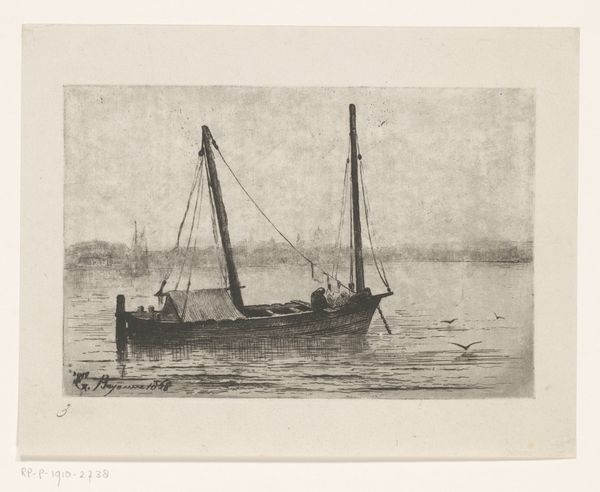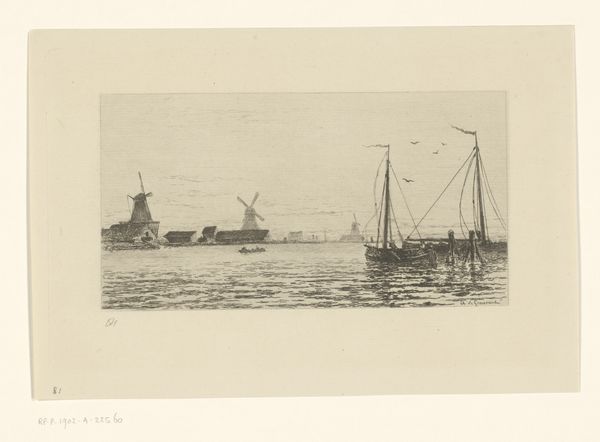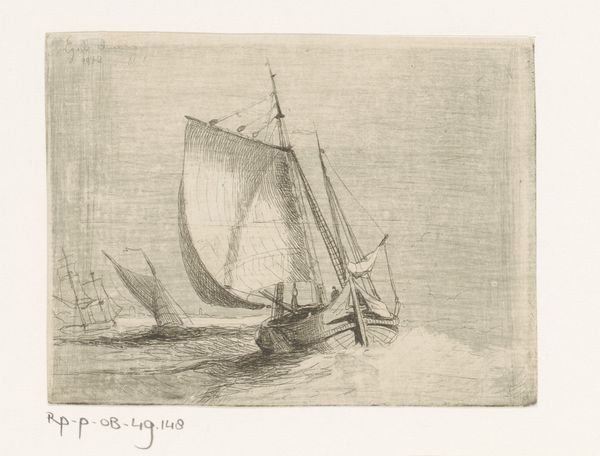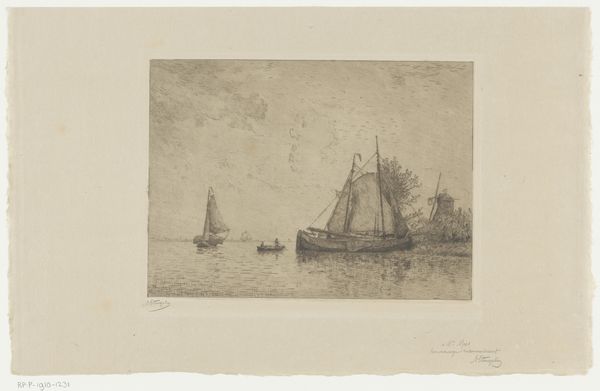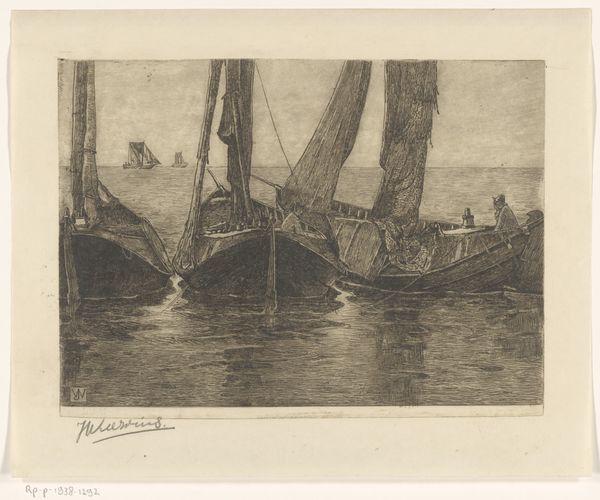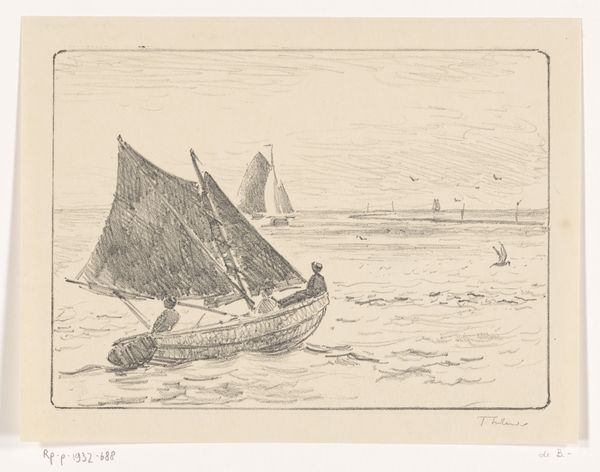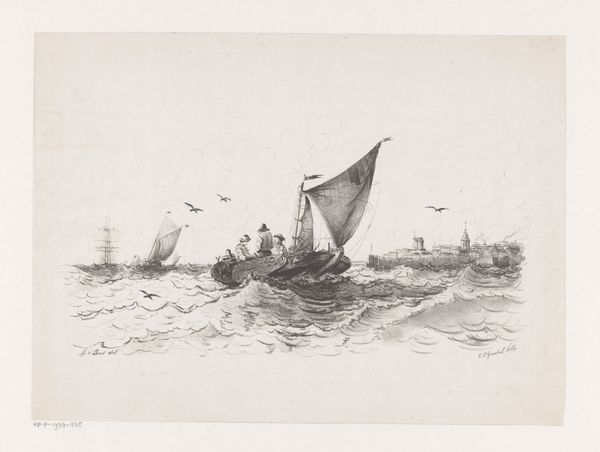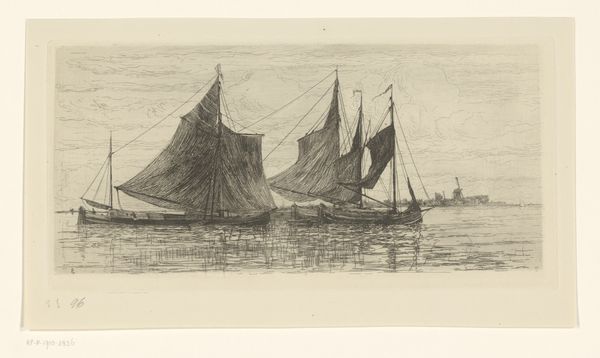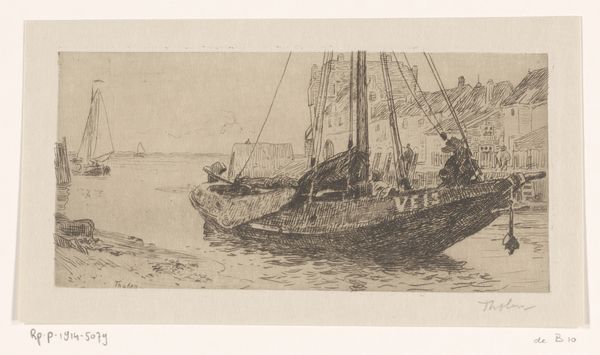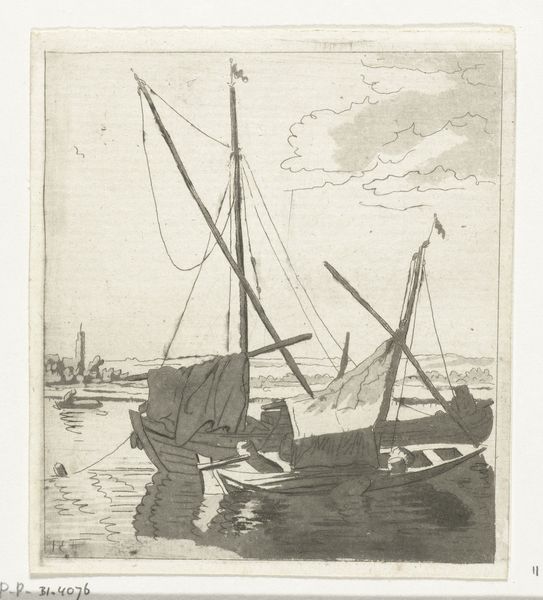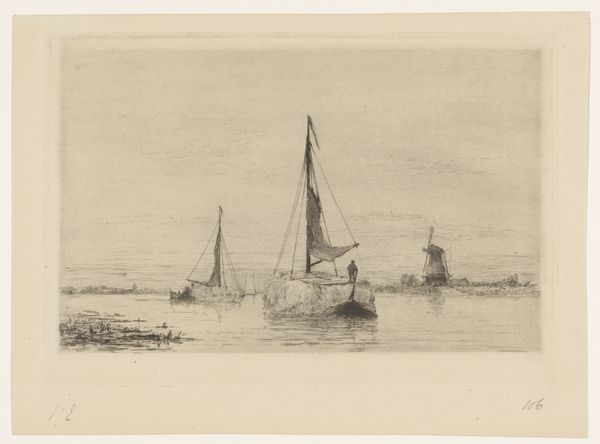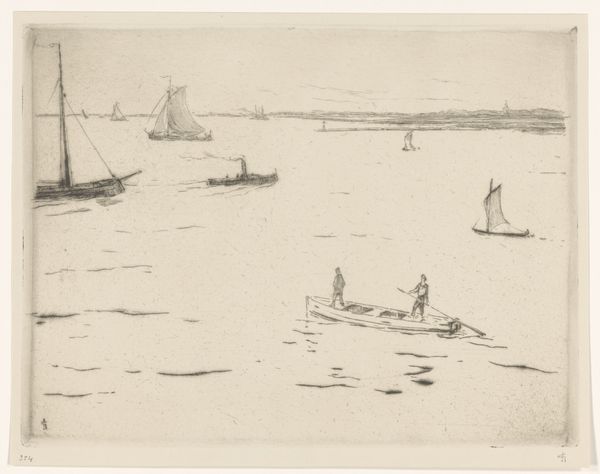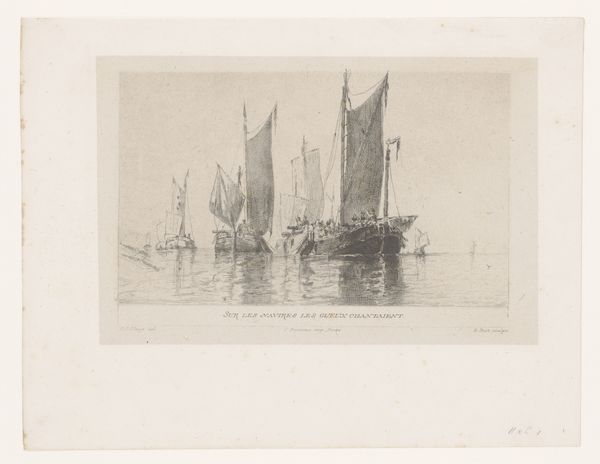
Dimensions: height 118 mm, width 170 mm
Copyright: Rijks Museum: Open Domain
Curator: Immediately, I am struck by how sparse the image feels, but in a peaceful way. The monochrome palette softens the entire scene, giving it a sense of quiet contemplation. Editor: Today, we’re observing "Two Sailing Ships on the Scheldt," a work made with etching and pencil on paper, created between 1889 and 1902 by Carel Nicolaas Storm van 's-Gravesande. The artwork depicts, as you might expect, two sailboats upon the waters of the Scheldt river. Curator: For me, boats sailing on the river almost always carry associations with journeys. Water, in many cultural symbol systems, serves as a border to different realms. And a sailboat then carries cultural implications as a vessel of passage from one space into another. Here, the sailboats glide smoothly on the river. But notice how only the people inside are rendered in fuller detail. It adds mystery and hints at inner voyages and journeys into the subconscious mind. Editor: Indeed. What’s compelling here is that, while we think of the Scheldt today as a major waterway tied to international trade and industrial production, at the close of the 19th century, as industrialization blossomed, many artists captured the human-scale interactions with the river before its full transformation into a thoroughly modern artery. This etching allows us to view the river not just as a means of transportation, but almost as a place of intimate communion. Curator: Yes, there's certainly a lack of bustling industrial iconography that one might expect. The symbols within the work are primarily organic. The water, wind, and boats work in harmony. Even the far shoreline is only delicately marked. I agree that its focus feels remarkably personal and evokes a deep inner stillness. Editor: This understated rendering seems so indicative of Storm van 's-Gravesande's sensibility. What seemed like a simple depiction initially unveils itself as a rather poignant and considered observation. Curator: Yes, a subtle reflection, perhaps, on the threshold between tradition and modernity. A quiet artwork, open to contemplation.
Comments
No comments
Be the first to comment and join the conversation on the ultimate creative platform.
